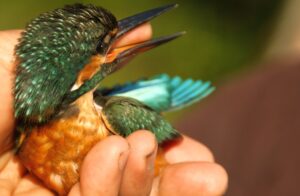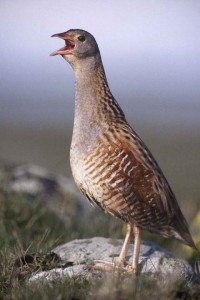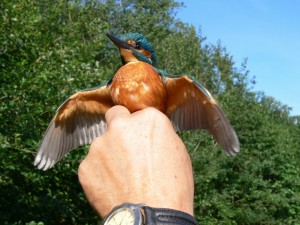Conservation & Research
Protecting threatened birds
In East and South Bohemia A Rocha Czech is studying, monitoring and working to protect three species which have seriously declined in recent years:
The Common Kingfisher Alcedo atthis – Pavel Světlík, director of A Rocha Czech, has been ringing Kingfishers for nearly 40 years and has noticed a marked decline in their numbers. In autumn 2002 A Rocha Czech ran a monitoring programme, with volunteers, which recorded severe flood damage to many formerly suitable nest banks and reduced numbers of birds. A Rocha Czech is now experimenting with artificial nest sites.
The White-throated Dipper Cinclus cinclus – Dippers in the Czech Republic have also been adversely affected by floods and acidic pollution of the rivers. Young people in A Rocha Czech’s nature clubs are monitoring local populations and making artificial nestboxes.
The Little Owl Athene noctua – A Rocha Czech is also monitoring Little Owls and providing nestboxes.

Protecting threatened habitats
Orlické Záhoří (Eagle Mountains) is a 904 hectare marshland and grassland site in Eastern Bohemia. The area holds important populations of Corncrake Crex crex and Red-backed Shrike Lanius collurio, both of which are priority species under the EU Birds Directive. Past damage from a drainage scheme and future pressures from overgrazing and tourism threaten the area. A Rocha Czech is working in partnership with the Czech Ornithological Society to carry out long-term monitoring of the birds, and working to ensure that restoration measures produce the desired effects.
Project BIRDHOUSE
In collaboration with Irish ornithologist Dr. Ken Perry and his helpers from Ireland, the Netherlands and Britain, a project for research on forest birds was established in the valley of the Zlatý Potok (Golden Brook) in the vicinity of the Krupárna eco-centre. The project focuses on the breeding productivity and success of cavity-nesting bird species. 200 birdhouses were put up in two forests in the area, with different concentrations of birdhouses. Visitors to Krupárna have the opportunity to observe the birds and participate in the project themselves. At the same time, bird species are being mapped and their abundance surveyed.
Dr. Perry’s experience with a similar project on the University of Ulster campus in Coleraine will allow the comparison of historical data from Northern Ireland with the population dynamics of Czech birds and their breeding biology.

SPA Orlické Záhoří
A Rocha partially participates together with the Czech Society for Ornithology in the protection and research in the Orlické Záhoří SPA (Special Protection Area). The subject of protection is the population of the European Corncrake Crex crex and its breeding habitat, which consists mainly of spring meadows, interspersed with cultivated mown meadows. Other important species include the Common Snipe Gallinago gallinago and the Red-backed shrike Lanius collurio.
Bird abundance is monitored annually by line or area counts using ringing, as well as monitoring of the breeding habitat.
Each year a group of young naturalists from secondary schools and universities participate in the research, giving them a taste of scientific fieldwork. Students also learn about the work of foreign ornithologists and compare different research methods.
Monitoring takes place on the last week of both May and June. If you are interested in joining us please contact info@arocha.cz.

The Kingfisher Project
All year round we catch and ring Common Kingfishers Alcedo atthis in the vicinity of the Krupárna eco-centre at Dobré on the Zlatý potok (Golden Brook). We measure and weigh the Kingfishers and remove parasites from their feathers, which are then examined by the University of Veterinary and Pharmaceutical Sciences in Brno. We also try to map the Kingfishers’ nesting sites and secure them against predators. We also build nesting containers for Dingfishers in places where the banks are unsuitable for nesting due to flooding.
